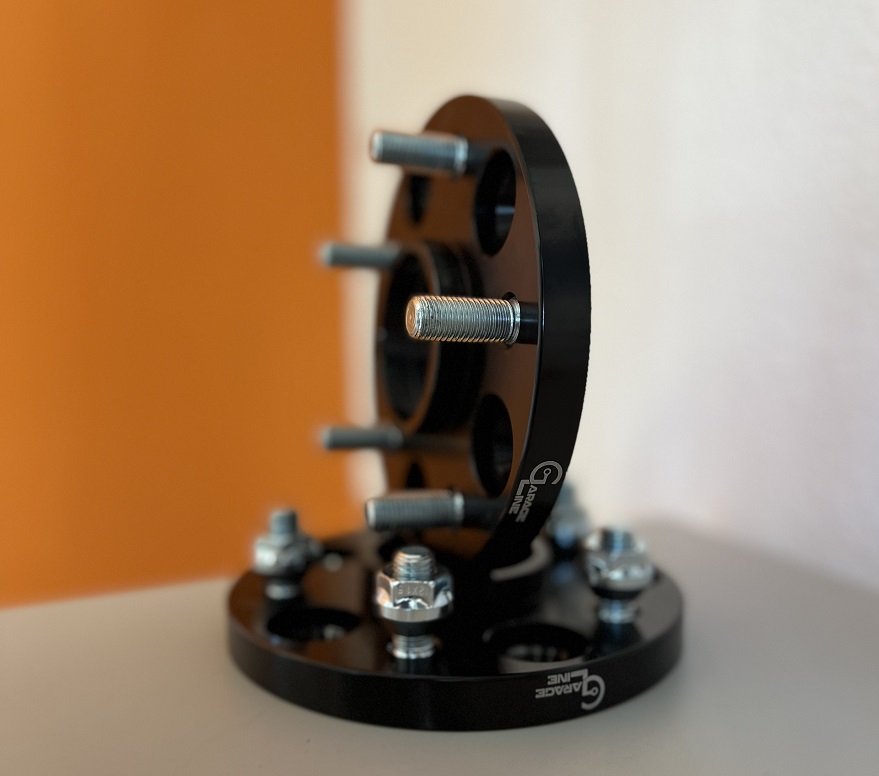How to Get the Right Wheel Spacers for Your Civic Big Brake Kit (BBK)
Big Brake Kits are awesome. They help the car stop faster and at a shorter distance. They can also shed some weight compared to the OEM brakes keeping unsprung mass in check. As well, they give your car a huge bump in style points.
Bigger Red, Black, and Orange calipers look much nicer than that dull cast aluminum look of your OEM brakes.
When the brakes get bigger, your stock wheels will not fit like they used to anymore. You want to be prepared for this when you install the BBK to avoid downtime. This is true when installing a 27WON Big Brake Kit on your OEM Honda Civic and Acura Integra. Without the proper use of wheel spacers, your factory wheels will not clear the 27WON kit.
We created a few free resources to help make it easier to determine what size wheel spacers (if any) you need for a successful install. Those are in the form of a wheel fitment template guide that you can download right here and a step-by-step YouTube video we created so you can see how to use the wheel template guide correctly.
Now, we can’t possibly lay out the correct wheel spacer options for every OE or aftermarket wheel out there, but we have a pretty solid understanding for those of you running the 27WON BBK on a 10th or 11th gen Civic, 10th Gen Accord, or 5th Gen Integra.
For OE Wheels
Most people that run an upgraded BBK do so with aftermarket wheels, but that’s not required. If you intend on using the wheels that came from the factory on your 2016+ Civic or 2023+ Acura Integra then the setup we suggest is a pair of either 20mm or 25mm front wheel spacers. Both will work well and you can use either. A 20mm spacer will give you a clean flush look, while 25mm pokes out just a hair, but is also pretty flush. So, it's really up to you on what size to get. You can add a rear spacer kit to match as well. Whichever one you pick, you will want at least 20mm so you don’t have to worry about your OEM studs running into the back of the wheel. More on that later…
This thickness of this particular wheel spacer (20MM or 25MM) will come with new embedded wheel studs and nuts. This spacer connects directly to your hub with OEM studs using the provided nuts. Then, you simply bolt your factory wheel to this spacer using your OEM lug nuts. For our 10th and 11th gen Civics, we have a 5x114.3 lug bolt pattern and a 64.1mm center bore.
You can even run a 10mm or 15mm wheel spacer with the OEM wheels. However, If you run a 10mm or 15mm spacer that has wheel studs installed on them (like some do) then you would need to cut the OEM studs so that they do not run into the back of the OEM wheels. The relief pockets in the OEM wheels are not as large as those found on aftermarket wheels so the studs on a spacer like this will run into the wheel. We don’t recommend cutting OE studs so we won’t lay out how to do it.
Now, if you are set on poking out that OEM wheel no more than you have to, then as thin as a 5mm non-studded wheel spacer will work.
However, there is another stipulation. You will need extended wheel studs. Thus, this will require that you remove the OEM wheel studs and replace them with aftermarket wheel studs like the ones pictured below. This is something that if you are not 100% comfortable with doing then we advise having a professional shop do the installation for you. We like the wider stance and so prefer using a spacer with embedded studs rather than going the route of extending the studs to use a narrower spacer. Your preference may vary.
Let me summarize wheel spacers for BBK fitment with OE wheels because this can all be rather confusing.
Basically, you can run as thin as a 5mm spacer and clear the brake calipers, but you’ll run into complications related to the OE wheel studs. This is why we recommend 20mm or 25mm spacers for OE wheels with embedded studs. It’s simple and we like the ‘flush’ look anyways. Several companies make them.
Aftermarket Wheels
Most aftermarket wheels are designed with the intent to fit over Big Brake Kits so you normally don’t have to run any wheel spacers with them. They are offered in a variety of offsets and sizes to allow clearance for most BBK’s. If you are buying new wheels then you should use our guide and follow the suggestions from the wheel manufacturer so that you can pick the right wheel offset to clear your new 27WON BBK without the use of any wheel spacers. Ideally, we don’t run a wheel spacer if we don’t have to. If you must run a spacer then our wheel template guide will work the same way it does on the OEM wheels. Reminder, the wheel fitment guide is up top in this article if you need to reference it again.
There you have it, now you know how to get the right spacer to run the 27WON BBK with your wheels.
I hope you guys found this blog useful and if you still have any questions about fitment, be sure and reach out to us directly so we can help dial in your perfect setup.
Till next time
-Vincent
REDEFINE the Aftermarket




